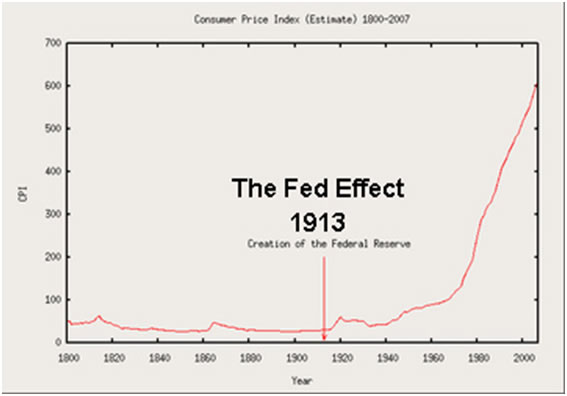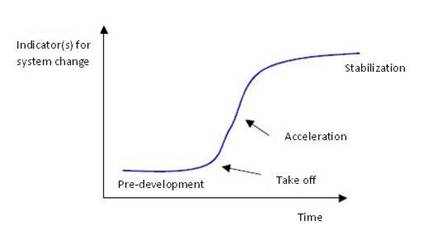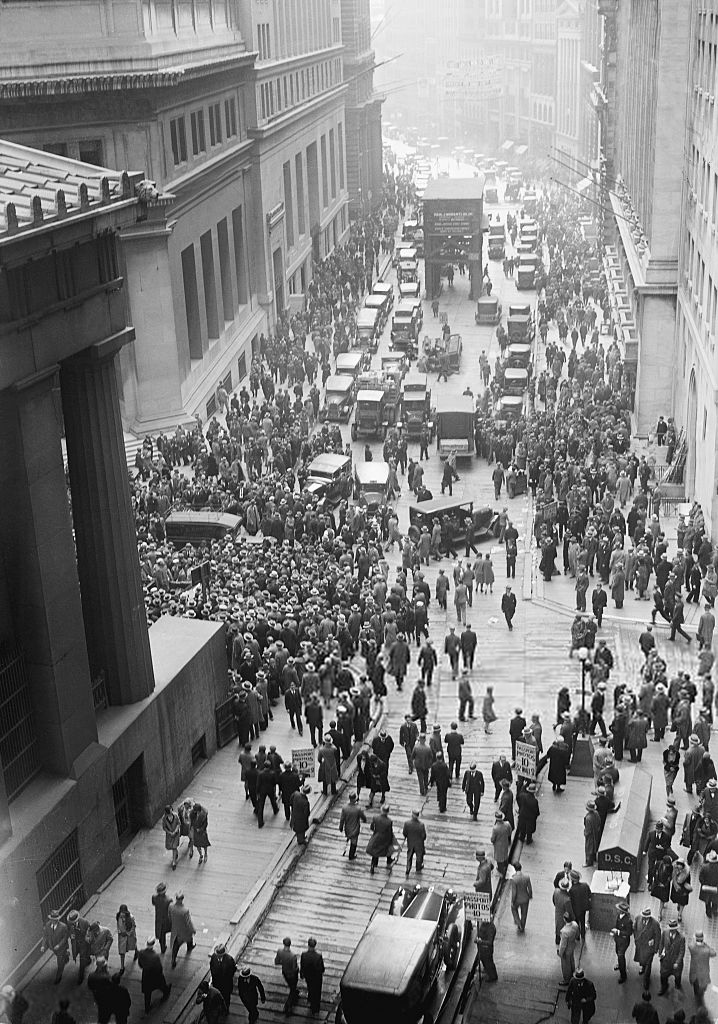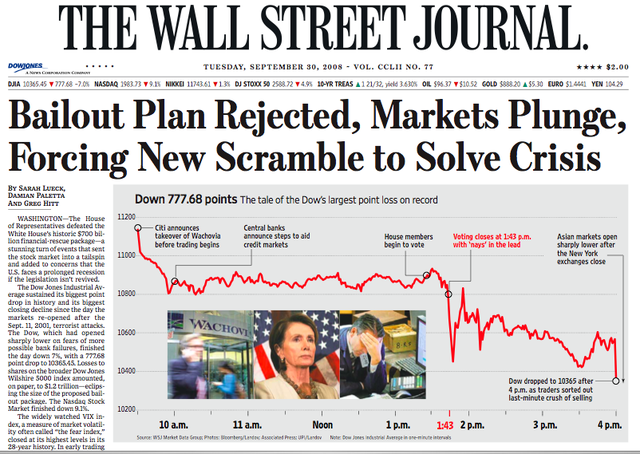SPECIAL REPORT
This exclusive North American article will be broken into a series of five consecutive posts providing our readers with useful market edges and insights that are unprecedented amoung peers, into the empirical patterns behind historical and "possibly future stock market crashes." The article is sourced and supported by the author's research; having first been published earlier in renowned European journals. Applying such knowledge wisely, thereby optimizes the chances for better decisions and increased wealth - First Financial Insights, Toronto, April 2015

New Stock Market Crash, A Pattern?
Part 5 - Will The Share Indexes Go Down Any Further?
Calculating share indexes as described before and showing indexes in historical graphs is a useful way to show which stage the industrial revolution is in.
Introduction, Growth, Flourishing and Decline

<< Fig Typical course of market development >>
The third industrial revolution is clearly in the saturation and degeneration phase. This phase can be recognized by the saturation of the market and the increasing competition. Only the strongest companies can withstand the competition or take over their competitors (like for example the take-overs by Oracle and Microsoft in the past few years). The information technology world has not seen any significant technical changes recently, despite what the American marketing machine wants us to believe.
During the pre development phase and the take off phase of a transition many new companies spring into existence. This is a diverging process. Especially financial institutions play an important role here. These phases require a lot of money. The graphs showing the wages paid in the financial sector therefore shows the same S curve as both revolutions.

<< Fig Historical excess wage in the financial sector >>
Investors get euphoric when hearing about mergers and take overs. Actually, these mergers and take overs are indications of the converging processes at the end of a transition. When looked at objectively each merger or takeover is a loss of economic activity. This becomes painfully clear when we have a look at the unemployment rates of some countries.
New industrial revolutions come about because of new ideas, inventions and discoveries, so new knowledge and insight. Here too we have reached a point of saturation. There will be fewer companies in the take off or acceleration phase to replace the companies in the index shares sets that have reached the stabilization or degeneration phase.
In the graph below we see the share price/income ratio over the past two industrial revolutions. At the end of the 2nd industrial revolution in 1932 this index reached 5. At the moment we are at 15. The index prices can still go down by a factor 3.


<< Fig industrial revolutions: share price / income ratio >>
Will history repeat itself?
Humanity is being confronted with the same problems as those at the end of the second industrial revolution such as decreasing stock exchange rates, highly increasing unemployment, towering debts of companies and governments and bad financial positions of banks.

<< Fig Two most recent revolutions: US market debt >>
Transitions are initiated by inventions and discoveries, the knowledge of mankind. New knowledge influences the other four components in a society. At the moment there are few new inventions or discoveries. So the chance of a new industrial revolution is not very high.
History has shown that five pillars are indispensable for a stable society


<< Fig The five pillars for a stable society >>
At the end of every transition the pillar Prosperity is threatened. We have seen this effect after every industrial revolution.
The pillar Prosperity of a society is about to fall again. History has shown that the fall of the pillar Prosperity always results in a revolution. Because of the high level of unemployment after the second industrial revolution many societies initiated a new transition, the creation of a war economy. This type of economy flourished especially since 1932, up to now. (i.e. US Hegemony)
Now, societies will have to make a choice for a new transition to be started. Without applied knowledge of the past there is chance for a better future, if any...
NEXT - Tomorrow...
ONE LAST PROFIT - CI ???
JUDGEMENT DAY...
ABOUT ARTICLE
The article “A new stock market crash, a pattern?”, in dutch "Nieuwe beurskrach, een wetmatigheid?” was published in a magazine “Tijdschrift voor economisch onderwijs” (magazine for economical education), a monthly publication of the VECON, A union of teachers in economic and social subjects in the
Wim Grommen writes: This paper advances a hypothesis of the end of the third industrial revolution and the beginning of a new transition. Every production phase or civilization or human invention goes through a so- called transformation process. Transitions are social transformation processes that cover at least one generation. In this paper I will use one such transition to demonstrate the position of our present civilization. When we consider the characteristics of the phases of a social transformation we may find ourselves at the end of what might be called the third industrial revolution. The paper describes the four most radical transitions for mankind and the effects for mankind of these transitions: the Neolithic transition, the first industrial revolution, the second industrial revolution and the third industrial revolution.
















